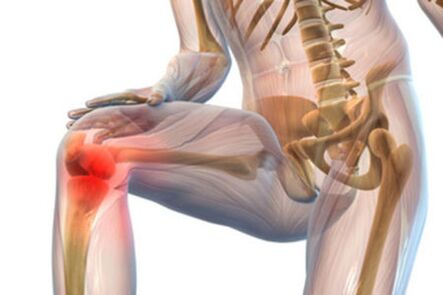
Osteoarthritis of the knee joint (gonarthrosis) is a degenerative lesion of the joint, which eventually leads to its deformation. In it, cartilage tissue begins to collapse. Gradually, the functionality of the knee is impaired and the patient loses the ability to move normally. This disease is very common.
Treatment of knee osteoarthritis is long-term, but may not provide a complete cure for the problem. However, therapy is necessary in order to maintain joint mobility and functionality for as long as possible, as well as improve the patient's quality of life.
Types of disease
It is possible to classify knee joint gonarthrosis for the reasons of its development. Primary is primary and secondary. The first type of disease occurs most often. It also has another name - idiopathic osteoarthritis. The exact reason for the development of this form of knee osteoarthritis is difficult to determine, as there are many influencing factors.
The secondary type of pathology is clearly related to one reason or another. For example, it often occurs after a knee injury due to severe physical strain on the knee joint. Such gonarthrosis is often genetically determined. Certain diseases can also cause dystrophic changes in the knee joint: diabetes mellitus, rheumatoid arthritis, congenital deformity of the lower extremities.
Why pathology develops
The knee joint is one of the most complex joints in the human body. It is formed by the femur, tibia and pelvis. The articulation also includes triangular cartilage with curved edges - meniscus. Well-coordinated knee work is provided by the musculo-ligament apparatus. Almost all surfaces of the ankle bones are covered with cartilage tissue, the thickness of which is about 0. 5 cm. It feeds on blood vessels, as well as diffusely (intake of beneficial substances from synovial fluid).
The cartilage in the knee allows the bone surfaces to slide and cushion them. If the nutrition of this tissue is disturbed, then the dystrophic processes begin in it, it becomes thinner. If left untreated, the cartilage disappears completely and the knee joint stops moving. The reason for the development of osteoarthritis can be different. For example, the following factors may provoke the onset of a secondary form of pathology:
- Excessive stress at the knee joint. In this case, changes may occur that the person is not even aware of. Therefore, the load should be moderate, especially in old age. The greatest damage comes from collecting and running on hard surfaces (asphalt).
- Knee injury. This can include meniscus damage, joint displacement, fracture. This reason contributes to the development of the disease in young people. After the limb is adjusted, the blood circulation in it deteriorates. Damage or removal of the menisci in 90% of cases leads to osteoarthritis.
- Lots of body weight. Excess weight can damage the menisci. Restoring the knee joint is elongated and difficult. In obese people, bilateral knee osteoarthritis often occurs. An additional negative point is the presence of varicose veins. In this case, the patient develops the most severe form of knee gonarthrosis.
- Weakness of the ligament apparatus. Because of it, it has a high joint mobility. Despite the fact that a person can sit on the rope without any problems even without heating, at this time the joint receives microtrauma. If the knee is damaged enough, osteoarthritis begins to develop.
- Violation of metabolic processes. In this case, the knee joint does not get enough nutrients.
- Articular pathologies. The presented pathology can be provoked by joint arthritis of the knee (reactive, rheumatoid). It is characterized by the development of inflammation and the accumulation of a lot of fluid in the cavity of the article. Cartilage tissue in the knee begins to deteriorate.
- Stressful situation. Mood swings, the constant presence of the nervous system in a state of tension can provoke osteoarthritis of the knee joints.
- Congenital diseases of muscles, ligaments and dysplasia.
- Chondrocalcinosis (premature deposition of calcium salts in the kneecap). The pathology is systemic.
- Osteomyelitis. This is an inflammation of the bone marrow, in which purulent masses form. They negatively affect the surrounding tissues. Over time, purulent masses go beyond the bones of the knee joints. Lack of treatment threatens the development of sepsis.
- Acromegaly. It is an endocrine disease in which the level of growth hormone - growth hormone - increases. Most often, a benign tumor in the anterior pituitary gland contributes to an increase in its amount. If such a disease develops during adolescence, the child develops a specific physique. Excessive growth rate of cartilage tissue leads to deformity of the knee joint.
- Diabetes.
- Hypothyroidism. This disease is also endocrine. Occurs due to lack of thyroid hormones. A person’s mass starts to increase, he moves a little and the knee joint jumps get tired.
- Bryma. In this case, ice crystals form in the soft tissues, which destroy the living cells.
- Synovitis (inflammation localized in the synovial sac of the joint).
All of these reasons are capable of provoking gonarthrosis in the knee, while the person will not even notice when the disease began to develop.
At what stages does osteoarthritis go through in its development?
The effectiveness of knee treatment depends on the degree of development of osteoarthritis diagnosed in the patient:
- First degree osteoarthritis of the knee. The pain at this stage is not felt much. The patient can endure the discomfort for years, while not in a hurry to contact a specialist or perform any kind of treatment. A person needs help during a deterioration. A sharp appearance of pain is not typical for knee osteoarthritis.
- 2nd degree knee osteoarthritis. The intensity of the concern increases. The pain occurs not only after physical exertion at the knee joint, but also at rest. To get rid of uncomfortable feelings, you need to rest more. In the area of the knee joints, swelling appears, the patient hears a crisis. Radiography shows a narrowing of the joint space, a slight deformity of the knee joint.
- 3rd degree knee osteoarthritis. In this case, the mobility of the knee is severely limited, and sometimes the foot cannot be fully steered. Joint pain becomes strong and persistent, it seems like a response to changing weather conditions. Discomfort is aching in nature, and it is difficult to get rid of it even at rest. Often the patient's sleep is disturbed, and to alleviate his condition at least a little, he uses NSAIDs. A person develops lameness, and the deformity of the joint is very noticeable.
Treatment of osteoarthritis should begin as soon as possible, before the destruction of bone tissue becomes critical. In case of irreversible changes, only surgery will help the patient.
Symptoms of osteoarthritis of the knee
The development of osteoarthritis does not occur overnight. As it progresses, the symptoms become more intense. For gonarthrosis, the following manifestations are characteristic:
- Crunching and clicking that is heard with a certain movement. The patient may notice this symptom quite late. However, he says that the surfaces of the joints have been damaged, grooves and bone growths have appeared in them.
- Swelling and enlargement of the knee.
- Painful sensations. In the first stage of osteoarthritis development, they are invisible and can only appear after a serious static load on the knee joint. Dynamic exercises, on the other hand, improve the condition of the joint, its nutrition and subsequent prognosis. Since the upper layer of cartilage is hidden in osteoarthritis, the nerve endings are exposed. After a while (after rest), the fibers are covered with a small layer of fibrin and become less sensitive - the knee pain disappears. If the knee joint continues to collapse, then the discomfort does not leave the person even at ease. Edema appears in the bursa, which compresses the nerves even more. The inflammatory process begins.
- Limited mobility. This symptom allows you to distinguish osteoarthritis from other pathologies of the knee joints. Stiffness appears in the morning after sleep and disappears after half an hour. If this condition lasts longer, then it indicates the presence of an inflammatory process.
- Reduced range of motion. The patient is unable to steer the limb to the end. Since the patient constantly feels pain, he tries to reduce the range of motion and the ligaments adapt to this. That is, they are shortened and do not allow the knee joint to fully fulfill its function.
- Blockage of joints. It arises as a result of a strong change in the surfaces of the article.
- Dislocations and subluxations. They appear in the last stage of osteoarthritis development, when the joint is severely deformed.
Over time, a person experiences muscle atrophy, osteophyte proliferation, and weakening of the lateral ligaments. The consequences of osteoarthritis are severe, as a person becomes disabled.
How to define osteoarthritis correctly?
To begin the correct treatment of osteoarthritis, the patient must undergo a thorough examination. Diagnosis should be differential, and includes the following studies:
- Radiography of the knee joint. With gonarthrosis, it is performed in two projections. The specialist needs an X-ray of the damaged and healthy knee. Radiography allows you to determine the following signs of osteoarthritis: narrowing of the joint space, osteophytes, subchondral sclerosis. Also, the presented study of the knee joint reveals subluxation, the ossification sites of cartilage tissue.
- Arthroscopy. This is a minimally invasive procedure used not only to diagnose osteoarthritis but also to treat it. It envisages the use of a special LED conductor with a camera at the end. It is inserted through a small opening on the side of the knee. The whole picture of the internal condition of the node is reflected on the monitor. However, the procedure has one drawback: the node is depressed and pathogenic microorganisms can enter it.
- Ultrasound. This diagnostic method is absolutely safe. The procedure helps to examine the soft tissues of the knee, as well as cartilage, synovium, blood vessels.
- CTThis is an X-ray examination method, however, it allows you to see not only bone structures but also soft tissues. Thanks to computer equipment, the specialist can build a three-dimensional model of the knee. However, to get accurate information, the patient must receive a significant dose of radiation.
- Scintigraphy. This is an x-ray examination using a contrast agent.
- MRI. In this case, magnetic rays are used to receive information. The photo shows the soft tissue more clearly.
- Thermography. The procedure is based on recording thermal radiation from the patient's body surface. So you can identify tumors, foci of inflammation. Study assigned a study for the purpose of differential diagnosis.
- General blood test. Helps to determine the severity of inflammation, to determine its nature.
- General urine examination. Thanks to him, it is possible to determine the systemic nature of the pathology.
- Blood chemistry.
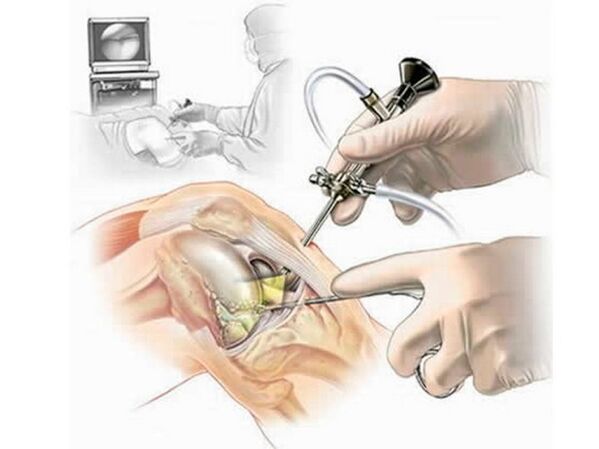
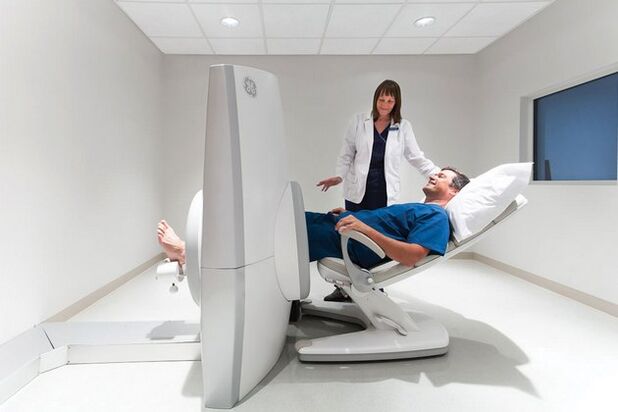
Thanks to these diagnostic measures, specialists can accurately diagnose knee osteoarthritis and prescribe a truly effective treatment.
Treatment of knee osteoarthritis
Treatment of osteoarthritis should be comprehensive and long-term. Since it will not be possible to completely stop the destruction of the joint, therapy must be performed continuously in order to improve the patient's quality of life.
Medications in the treatment of osteoarthritis
Your doctor may prescribe the following medications:
- Non-hormonal anti-inflammatory drugs. They are used in the form of tablets and oils. However, in the case of severe pain syndrome, which cannot be eliminated by standard methods, an injection is used. Helps to quickly soothe pain, relieve swelling and reduce the intensity of inflammation. These remedies can only eliminate the symptom, but they cannot cure osteoarthritis. Only a doctor should prescribe these funds. The course of treatment lasts no more than 14 days, and relief already comes in 2-3 days.
- Chondroprotectors for knee osteoarthritis. Each such medicine contains beneficial substances that can regenerate cartilage. However, it will only be effective if its application starts on time. If the cartilage is completely erased, then the use of chondroprotectors will be useless. Treatment with such tools will be long-term (at least 6 months). Day tablets and medicines are used more often, although injections are possible.
- Vasodilators. They help relieve spasm and pain syndrome, restore normal blood circulation and improve nutrition of the knee joints.
- Glucocorticosteroids. Most often they are used in the most difficult cases, when other drugs do not give a positive effect. Injections inside the knee article are used for osteoarthritis. They are allowed to be used only once a year.
- Enzymes. They ensure the regeneration of cartilage structure in the early stages of the development of knee osteoarthritis. They are also prescribed for injection into the joints.
- Hyaluronic acid. Provides smooth movement of the knee joint, as it is able to replace synovial fluid.
- Local preparations - ointments, creams, gels. They also only relieve symptoms.
- Medication compresses. In this case, a drug is used that can penetrate the skin, helps eliminate muscle clamps and has a resorbing effect. Compression can be done using medical bile.
Drug therapy in the treatment of osteoarthritis is essential. However, medications should be used strictly at the dose prescribed by the doctor. It is impossible to independently increase or decrease the rate, to change the daily rate without the knowledge of a specialist.
Characteristics of physiotherapy and exercise therapy treatment
You can also treat osteoarthritis of the knee joints using physiotherapy procedures:
- Massage. Helps to restore normal blood circulation to the tissues, to eliminate muscle spasm.
- Drug electrophoresis allows you to eliminate inflammation in the joints, and also produces an analgesic effect.
- Magnetic therapy. With the help of specific radiation, the tissues surrounding the affected right or left node are stimulated. Metabolic processes in cells are improved.
- UHF waves stimulate the production of synovial fluid, which lubricates the knee.
- Phonophoresis with corticosteroids.
- Electrotherapy helps to eliminate not only pain but also swelling.
- Mud therapy.
- Hirudotherapy.
- Shock wave therapy.
- Heat treatment. This includes paraffin therapy. Thanks to this procedure, local blood circulation is improved.
- SMV therapy. This physiotherapy stimulates blood circulation, relieves swelling, and helps improve cartilage tissue nutrition.
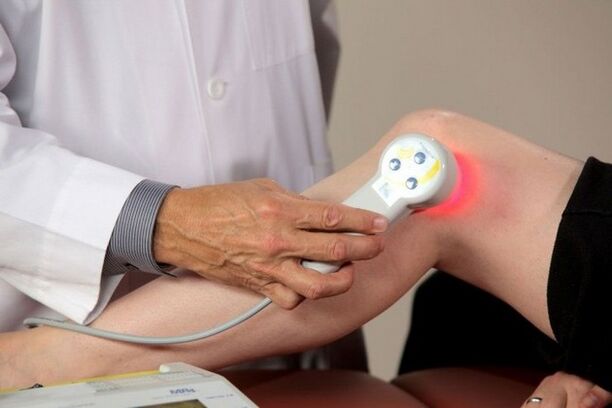
Physical therapy is extremely beneficial. It is necessary to restore the elasticity of muscle tissue and ligaments, to improve the movement of the knee joint. The following exercises will be helpful:
- Lying on your stomach, you should lift your legs up in turn. In this case, they should not bend at the knee. The height of the rise is approximately 20 cm.
- Lying on your left side, you should bend your left leg and raise it up 30 degrees. It is necessary to hold the limb in this position for up to 30 seconds. The same exercise should be done with the right foot.
- Sitting in a chair, the legs should be directed and raised in a row as high as possible.
The group of exercises is chosen individually by the attending physician. Gymnastics is best done after a little massage with medicinal oils. Physiotherapy is an additional effective method of treating osteoarthritis, which enhances the effect of medication.
Is surgery necessary?
In the most severe cases, when the joint is severely destroyed by osteoarthritis, the patient is prescribed an operation. There are several types of interventions:
- Withdrawal of articulation. It involves stretching the joints damaged by osteoarthritis in order to increase the gap between the cartilages. This will make it possible to prevent further tissue destruction and its gradual recovery.
- Endoprosthesis is a complete replacement of a joint destroyed by osteoarthritis. It is performed as a last resort. Replacement can be complete or partial. The prosthesis will need to be changed in 10-15 years.
- Osteotomy. Such a treatment for osteoarthritis makes it possible to mechanically correct severely deformed bone deviations. In this case, the strong elements break down in a strictly defined place. Next, the bones are positioned correctly and fused.
- Arthroscopy. With its help, the restoration of the cartilage surface destroyed by osteoarthritis is performed. In addition, with the help of an arthroscope, foreign bodies and bone fragments can be removed from the joint. Such an operation is used for joint hypermobility. Arthroscopy is considered a low-trauma procedure, so rehabilitation after it does not take long.
It is better not to take him to surgery. Treatment should begin in the first stage of osteoarthritis development. Orthopedic devices will help consolidate the result: a cane, an orthosis to reduce the load, knee braces with infrared radiation.
Use of folk remedies
It is impossible to completely cure osteoarthritis, as the degenerative process will gradually progress. However, you can eliminate the symptoms and stop the destruction of the knee joint in osteoarthritis. Folk remedies can be used during a deterioration, as well as during a relative calm. But first you need a specialist consultation. The following recipes will be helpful for osteoarthritis:
- Chopped horseradish root should be boiled in a small amount of water on low heat. After that, the particle should be filtered and placed around the knee affected by osteoarthritis. Compression should be fixed with a bandage. You need to do the procedure every day for a month. Compression improves blood circulation and tissue repair.
- Rubbing any vegetable oil on the knee joint area for osteoarthritis will help eliminate the pain. However, it should heat up a bit.
- Midwifery provides a good effect. It is necessary to mix 3-4 g of raw material with 100 g of honey and mix everything thoroughly. You should rub the medicine on the sore spot in the evening, before going to bed. Next, wrap the affected area with a warm scarf. Waiting for mom inside is also welcome. You can use it with 0, 2 g per day.
- Fresh dandelion flowers can be completely washed and consumed 5-6 pieces per day. Also dry raw material in the amount of 1 tbsp. you should pour a glass of boiling water, insist and drink 1/3 cup three times a day.
- Rubbing aloe leaves. It is necessary to twist 10 leaves of the plant and squeeze through cheesecloth. The juice is mixed with half a glass of honey and 150 ml of red wine. The resulting product is poured into a dark glass container and applied daily for a month.
Cabbage and burdock leaves will help relieve inflammation in osteoarthritis. Folk remedies can not be considered as medicine, but they increase the effectiveness of other types of therapy.
Nutritional rules for osteoarthritis
Treating osteoarthritis does not require a particularly strict diet, but you still need to adhere to a few nutritional rules:
- Reduce salt intake. Its total amount per day should not exceed 2 g. It is best to salt the dish shortly before use, rather than during cooking.
- The amount of spices used in the treatment of osteoarthritis should also be reduced. The same goes for fermented foods, pickles. Marinades and canned food are better, in general, to be excluded from the diet.
- Animal fats are not recommended.
- The menu should not contain cakes, pastries and bread made from wheat flour.
- With osteoarthritis, alcohol and nicotine are strictly forbidden.
- Dishes with gelatinous content are useful: soup, favorite meat, beef bone broth.
- Importers is important for osteoarthritis to consume milk protein (products should not be fatty), fish, seafood.
- The diet should contain vegetable oils, vegetables and fruits, freshly squeezed juices.
- A person should consume a sufficient amount of fluids per day.
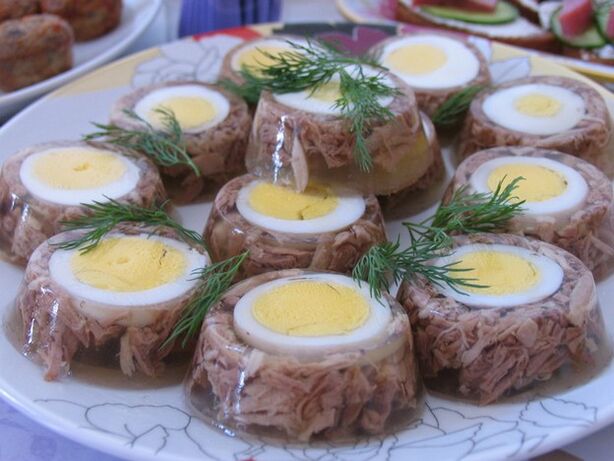
The correct diet for osteoarthritis should be developed by a specialist. You can not go to extremes, even if the patient is overweight. Dramatic and improper weight loss will only worsen your health. In this case, treatment will be significantly delayed.
Prevention of osteoarthritis
To avoid the possibility of developing osteoarthritis, as well as not to lose the ability to walk, you should follow the following expert advice:
- We must not forget the movement. Better to go to the pool, ride a bike, go for a walk in the fresh air. You can also go to the dance.
- It is advisable to avoid any damage and hypothermia of the knee joint, as this provokes post-traumatic osteoarthritis.
- It is best to use knee pads or other orthopedic devices for extended stretching.
- It is advisable to wear comfortable shoes.
- Importers It is important to eat well - osteoarthritis will not stand a chance if all the necessary nutrients are supplied regularly to the joint.
- If you are overweight, you need to get rid of it.
- Better yet to avoid stress as well as organize work and rest routine correctly.
- It is necessary to strengthen the body's defenses.
- All inflammatory or infectious pathologies that may provoke the development of osteoarthritis should be eliminated in time.
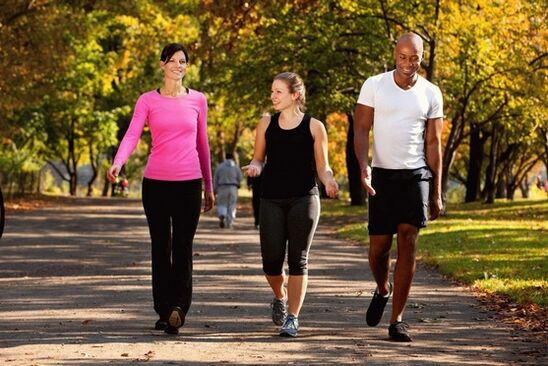
Proper prevention can significantly delay joint destruction, which under normal conditions is a natural aging process in the body.
Osteoarthritis of the knee is an incurable disease, but its progression can be slowed down and even stopped by improving the quality of life.

























